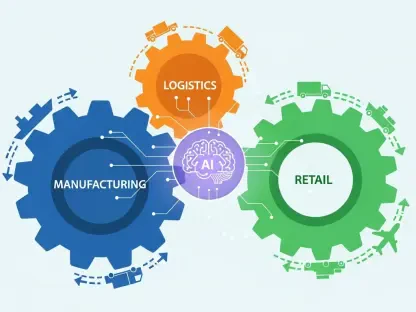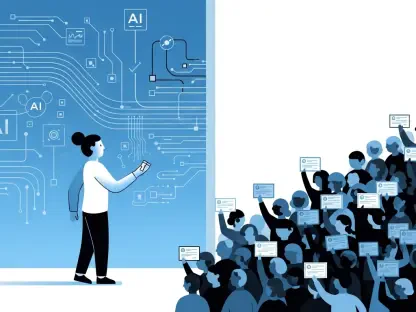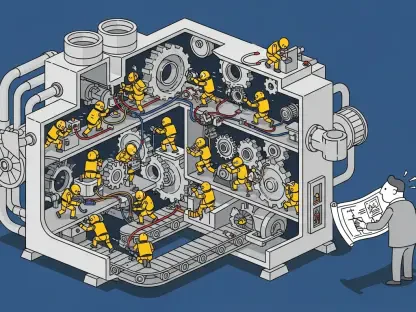Artificial intelligence (AI) has made significant strides in recent years, tackling complex tasks such as writing essays and generating art. However, when it comes to interpreting basic time-related data, such as reading analog clocks and calendars, AI stumbles over what seem to be simple tasks. Research from the University of Edinburgh sheds light on these limitations and reveals the underlying issues that impede AI’s capabilities in time comprehension.
The Surprising Inability to Read Time
AI vs. Analog Clocks
The research assessed various AI systems’ proficiency in interpreting images of analog clocks. Despite the simplicity of this task for humans, the AI models struggled considerably. Tests included different clock designs with elements like Roman numerals, second hands, and colored dials to evaluate the AI’s performance across various configurations. Shockingly, the AI systems could correctly identify the clock-hand positions less than 25% of the time, highlighting a significant gap in their spatial reasoning abilities. This noticeable difference in success rates underscores a fundamental challenge in the realm of AI’s spatial and contextual understanding.
In these tests, researchers sought to examine how AI systems process visual information from traditional timekeeping devices. Analog clocks have been a staple in human environments, providing quick and intuitive access to the passage of time. However, for AI, the task of decoding the positions of hour, minute, and second hands proved to be far more complex than anticipated. The poor performance was especially evident when the designs deviated from standard configurations. The introduction of Roman numerals, stylized hands, and various colored dials created a significant hurdle for current AI models, revealing a profound limitation in their capability to make sense of spatial and contextual nuances in such everyday objects.
Hand Detection and Spatial Awareness
One of the primary issues was the AI’s difficulty in detecting and interpreting the positions of clock hands. This problem was even more pronounced with clocks that featured Roman numerals or stylized hands. Interestingly, removing the second hand did not lead to better results, which indicates that the AIs faced fundamental challenges with spatial context and angle interpretation. The ability to accurately perceive the positions and angles of clock hands is crucial for time comprehension, and the AI models tested were consistently unsuccessful in this regard. This observation underscores the necessity for improved spatial awareness in AI design.
The implications of these findings extend beyond mere time-telling. They highlight a broader issue of how AI processes visual scenes, particularly those that require an understanding of relative positioning and spatial orientation. Clocks, despite their seemingly simple function, present a rich source of contextual information, which humans readily interpret due to our inherent spatial reasoning skills. For AI, however, these tasks revealed glaring deficiencies. The ability to discern angles, interpret the spatial relationships between objects, and understand context remains a significant challenge that current AI technology needs to overcome to achieve more nuanced and intuitive interactions with the world.
Challenges with Calendars
Missteps in Date Calculations
Beyond clocks, the researchers evaluated AI’s competency in handling calendar-based queries. Tasks included identifying holidays and calculating dates in the past or future. The findings showed that AI models made errors in date calculations around 20% of the time, signaling difficulties with basic arithmetic and contextual comprehension critical for accurate date interpretation. The ability to correctly manage dates is essential not only for daily scheduling but also for applications in various fields, from business logistics to personal planning, all of which necessitate a high level of precision and reliability.
The errors in date calculations reflect deeper issues within AI’s framework for processing sequential and contextually bound information. The AI systems’ inability to perform these seemingly simple tasks points to fundamental problems in their programming related to arithmetic operations and understanding the context of dates within a calendar year. For example, calculating the number of days between two dates or identifying a holiday from a given date requires a synthesis of arithmetic precision and contextual knowledge, which current AI models lack. This deficiency presents a significant barrier to the practical application of AI in time and date-centric tasks, emphasizing the need for advancements in these areas.
The Need for Contextual Awareness
These mistakes underscore a broader issue: AI’s weakness in grasping contextual information and performing basic arithmetic functions effectively. This inability not only limits AI’s usefulness in tasks involving calendars but also poses challenges for its deployment in time-sensitive real-world applications like scheduling assistants and assistive technologies for the visually impaired. The crux of the problem lies in AI’s failure to integrate various pieces of contextual information seamlessly, an ability that’s crucial for accurately interpreting calendars and executing related functions.
Contextual awareness in AI involves understanding the background and significance of the information it processes. In the case of calendars, this means recognizing the significance of dates in relation to each other and understanding cultural and societal contexts—like holidays and day counts within months. Current AI models lack this depth of understanding, resulting in frequent errors that undermine their reliability in practical applications. Enhancing AI’s contextual comprehension could lead to significant improvements across a variety of uses, making AI a more dependable partner in time management and planning tasks.
Bridging the Gap
The Paradox in AI Development
The study reveals a paradox in AI advancements, where impressive progress in complex reasoning and creativity coexists with notable deficiencies in mundane tasks. Researchers such as Rohit Saxena and Aryo Gema highlight the urgent need to address this disparity to ensure the effective integration of AI into practical, everyday roles. This gap must be bridged to unlock AI’s full potential in a variety of applications. The challenge lies in refining AI’s foundational skills—skills that humans take for granted but are essential for AI to perform efficiently in real-world scenarios.
For many AI researchers, the focus has been on pushing the boundaries of what AI can achieve in creative and logical tasks. While this has led to astonishing breakthroughs, it has also resulted in a concerning oversight of basic, yet critical, abilities. Recognizing and addressing this discrepancy is key to advancing AI to the next level, where it can perform not only the extraordinary but also the ordinary with equal proficiency. This dual development approach will be necessary to create AI systems that are versatile and capable of contributing meaningfully across various domains.
A Path Forward
Artificial intelligence (AI) has made remarkable progress over the last few years, accomplishing tasks that once seemed impossible for machines, such as writing essays and generating art. Despite these advancements, AI experiences difficulties with seemingly simple tasks involving time comprehension, like reading analog clocks and understanding calendars. This paradox of AI mastering intricate activities but struggling with basic time-related tasks has puzzled many researchers. Recent studies conducted by the University of Edinburgh have delved into these limitations, uncovering the specific challenges that hinder AI in this domain. Their research demonstrates that while AI can handle highly complex and abstract problems, it often falters at tasks requiring intuitive understanding of time and context. This reveals a critical gap in AI’s ability to process temporal information, highlighting areas that need improvement if AI is to fully mimic human cognitive capabilities. By addressing these challenges, researchers aim to enhance AI’s functionality across a broader spectrum of everyday tasks.









